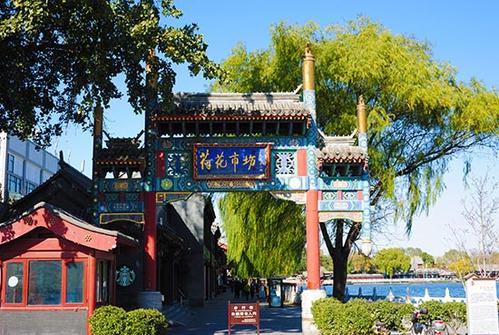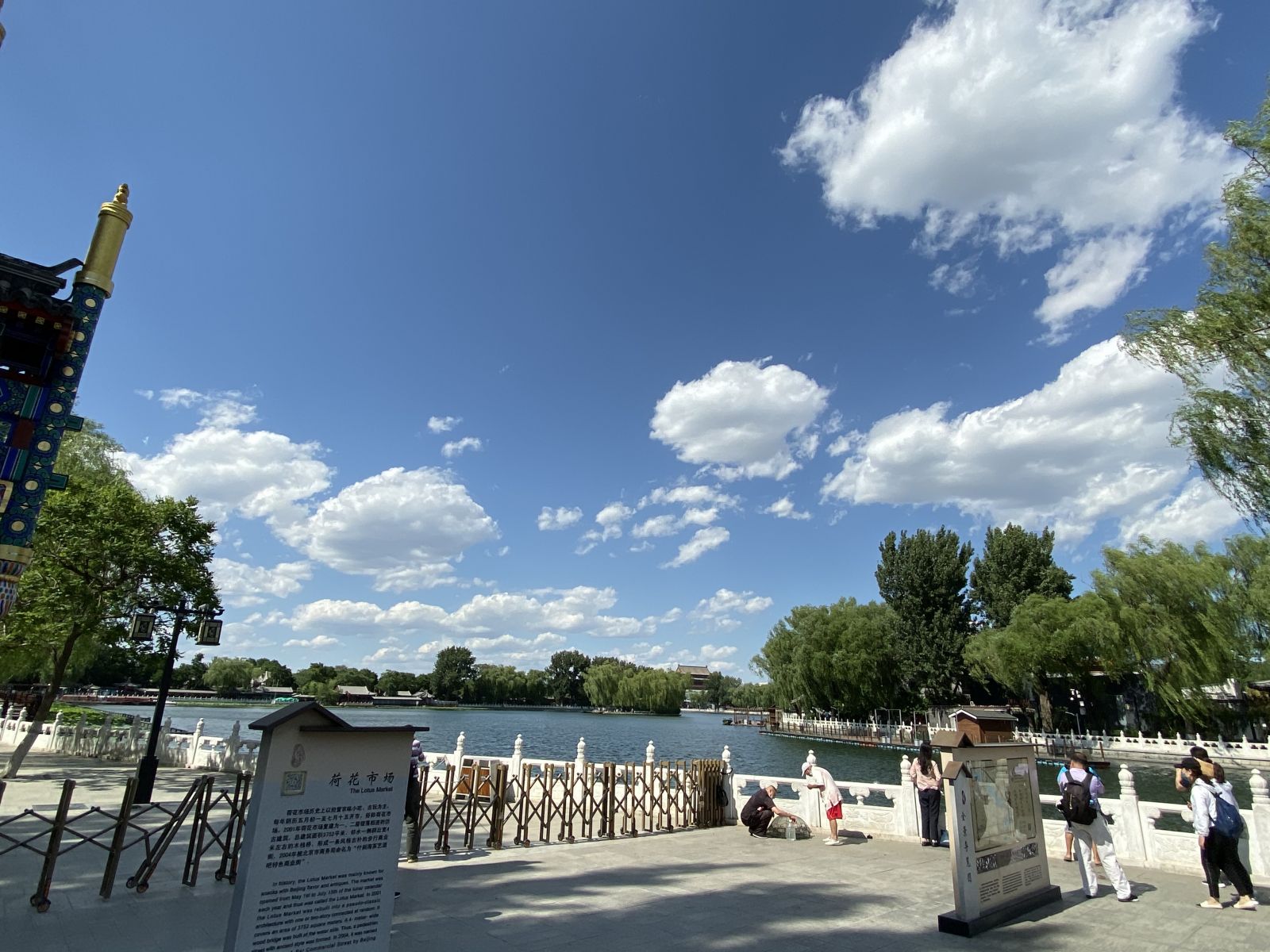Chinese Name: 荷花市场 Pronunciation: Héhuā Shìchăng
Building Time: In the 1920s
Market Length: About 300 meters
Recommended Visiting Hours: 1-3 Hours
Address: No.51, Di’anmen West Street, Xicheng District, Beijing, China

The market, located on the west bank of Shichahai, a historical and cultural tourist attraction, has been a popular relaxing resort for people in Beijing since it emerged in the 1920s. The market boasts not only entertainment venues but also many commodity-selling sites. Besides, you can also watch several opera performances here, some of which require payment, but they are voluntary consumption, and the fares are subject to actual shows information.
Concerning the name origin, it is said that the lake near the market is covered with lotus flowers every summer. The beautiful flowers, together with the refreshing water in the lake, attract more and more people quickly, and as a result, the place is known to people all over the nation. Hence, it was named Lotus Market.
This area is also a very place to visit the noted Beijing Hutong. Along the lake, traditional Chinese-style houses with blue brick walls and gray titles stand in a row waiting for tourists. Entering into these houses, visitors will find that there are bars, coffee shops, antique stores, and restaurants.

At the end of the Qing Dynasty (1636-1912), Lotus Market was a seasonal market, from the Dragon Boat Festival in the 5th month to the 15th day of the 7th month of the Chinese lunar calendar. When the weather became cool, the market was closed accordingly. Generally speaking, the busiest time then was usually in the 6th and 7th months of the Chinese lunar calendar, when there were lots of stalls and opera shows.
As the founding of the Republic of China (1912-1949), the market was still thriving for a period of time. One ancient literature recorded that lotuses were in full bloom, houses arrayed row by row, willow trees grew well along the embankment, and recreational performances were organized for people.However, as the Kuomintang government moved the capital to Nanjing, the market gradually declined.
It was not until 1990 that the Beijing government re-opened Lotus Market. The famous calligrapher Qigong wrote four Chinese characters (meaning Lotus Market), which are carved on the plaque set on the archway above its south gate.
You may be interested in souvenirs and handiworks which are made with artisan craftsmanship inherited for a long time.
A variety of food stalls gather here. Visitors can enjoy a taste feast cozily. Firstly, you cannot miss the Eight Treasures Congee which ranks top nationwide. Others, like the rice cake with about eight flavors, the taste-catching tofu pudding, and the palatable deep-fried dough stick all provide you an enjoyable taste experience.
The recreational activities of Lotus Market are mainly composed of Chinese folk art and juggling performance. There are kinds of popular folk music rooted in the north of China. You can appreciate shows like cross talk, shuttlecock kicking, Martial Art, Beijing Opera performance, and Pingshu (an ancient Chinese tradition of oral speaking art), etc.
Once in the late Ming Dynasty (1368-1644), officials and rich businessmen chose to build houses and settled down near the market for beautiful scenery and convenient life. Moreover, living here could be beneficial to go to the imperial court. Up to now, this area is still a mansion gathering place.
Many Chinese celebrities had frequently visited the market, including Lu Xun (writer), Xu Zhimo (poet), Lao She (writer), Zhang Daqian (painter), and Qi Baishi (painter). Bai Yunpeng (1874-1952) also visited the market for performances. He was the founder and performer of Bai School Jingyun Dagu (Jingyun Dagu, a kind of drumbeat performance, is a branch of Dagu, in which stories are told in the Beijing dialect with a drum accompaniment).
It is advisable to visit in July and August for lotus appreciation, accompanied by swaying willows. Winter is a good time to experience the skating.
Walking on the plank road to view the lake scenery of Shichahai.
Renting a boat on the wharf for rowing on the lake.
Take bus 3, 13, 42, 107, 111, 118 or 612 and get off at Beihai North Gate Station. And then you need a 3- minute walking to the destination.
Take Metro Line 6, get off at Beihai North Station, and exit B. After that, you need to walk eastward for 310 meters along the Di’anmen St., turn left, walk 20 meters to go across the stairs, go straight for 30 meters to the destination.
Chinese: 请带我去荷花市场。English: Please take me to Lotus Market.
If you go to Lotus Market from the center of Beijing (Grand Hyatt Beijing), it takes about 20 minutes (about 20 yuan).
If you go to Lotus Market from Beijing Capital International Airport, it takes about 40 minutes (about 100 yuan).
If you go to Lotus Market from Beijing Daxing International Airport, it takes about 1 hour (about 170 yuan).
If you go to Lotus Market from Beijing West Train Station, it takes about 30 minutes (about 30 yuan).
